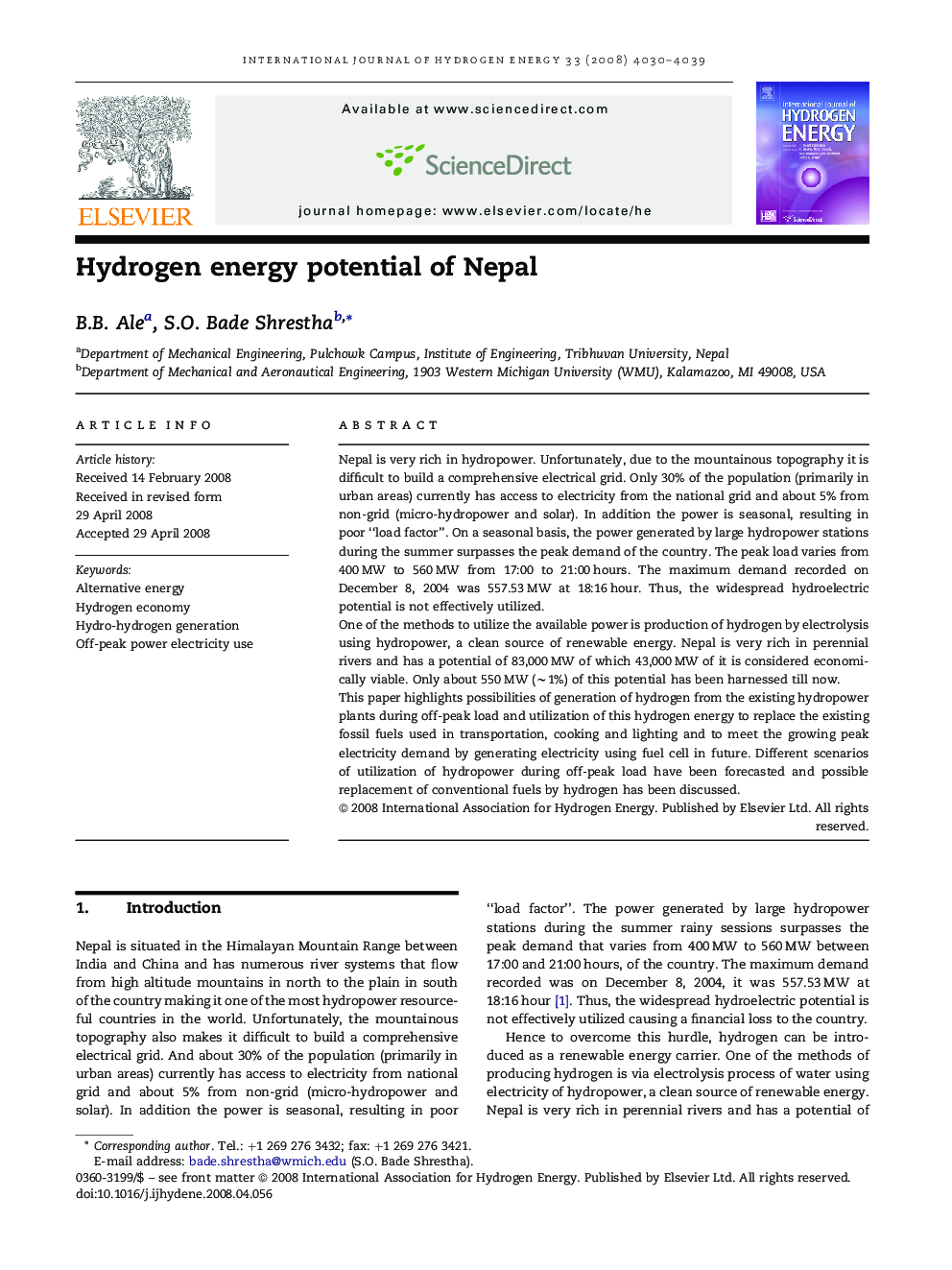| Article ID | Journal | Published Year | Pages | File Type |
|---|---|---|---|---|
| 1278848 | International Journal of Hydrogen Energy | 2008 | 10 Pages |
Nepal is very rich in hydropower. Unfortunately, due to the mountainous topography it is difficult to build a comprehensive electrical grid. Only 30% of the population (primarily in urban areas) currently has access to electricity from the national grid and about 5% from non-grid (micro-hydropower and solar). In addition the power is seasonal, resulting in poor “load factor”. On a seasonal basis, the power generated by large hydropower stations during the summer surpasses the peak demand of the country. The peak load varies from 400 MW to 560 MW from 17:00 to 21:00 hours. The maximum demand recorded on December 8, 2004 was 557.53 MW at 18:16 hour. Thus, the widespread hydroelectric potential is not effectively utilized.One of the methods to utilize the available power is production of hydrogen by electrolysis using hydropower, a clean source of renewable energy. Nepal is very rich in perennial rivers and has a potential of 83,000 MW of which 43,000 MW of it is considered economically viable. Only about 550 MW (∼1%) of this potential has been harnessed till now.This paper highlights possibilities of generation of hydrogen from the existing hydropower plants during off-peak load and utilization of this hydrogen energy to replace the existing fossil fuels used in transportation, cooking and lighting and to meet the growing peak electricity demand by generating electricity using fuel cell in future. Different scenarios of utilization of hydropower during off-peak load have been forecasted and possible replacement of conventional fuels by hydrogen has been discussed.
